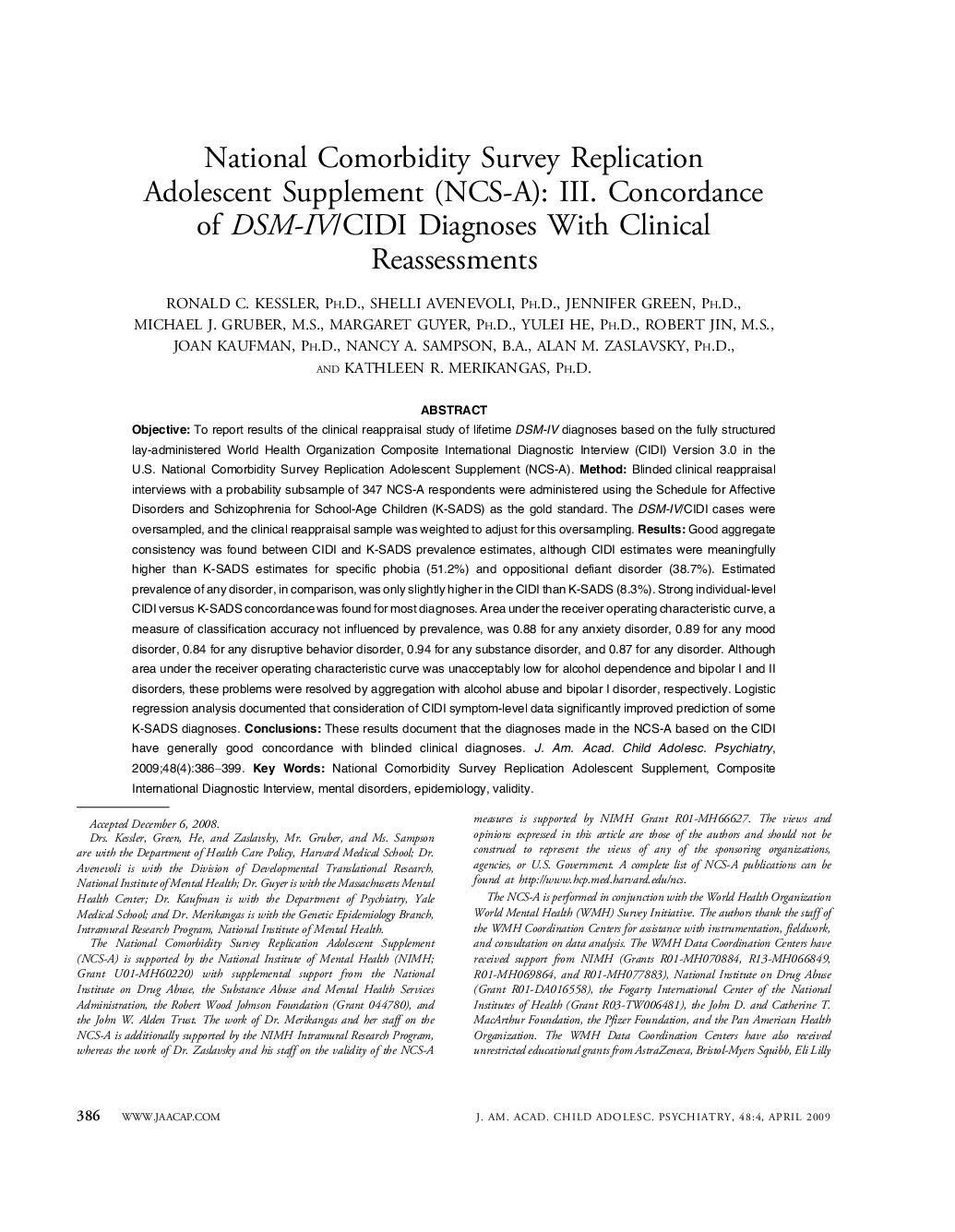| کد مقاله | کد نشریه | سال انتشار | مقاله انگلیسی | نسخه تمام متن |
|---|---|---|---|---|
| 325896 | 1433013 | 2009 | 14 صفحه PDF | دانلود رایگان |

ObjectiveTo report results of the clinical reappraisal study of lifetime DSM-IV diagnoses based on the fully structured lay-administered World Health Organization Composite International Diagnostic Interview (CIDI) Version 3.0 in the U.S. National Comorbidity Survey Replication Adolescent Supplement (NCS-A).MethodBlinded clinical reappraisal interviews with a probability subsample of 347 NCS-A respondents were administered using the Schedule for Affective Disorders and Schizophrenia for School-Age Children (K-SADS) as the gold standard. The DSM-IV/CIDI cases were oversampled, and the clinical reappraisal sample was weighted to adjust for this oversampling.ResultsGood aggregate consistency was found between CIDI and K-SADS prevalence estimates, although CIDI estimates were meaningfully higher than K-SADS estimates for specific phobia (51.2%) and oppositional defiant disorder (38.7%). Estimated prevalence of any disorder, in comparison, was only slightly higher in the CIDI than K-SADS (8.3%). Strong individual-level CIDI versus K-SADS concordance was found for most diagnoses. Area under the receiver operating characteristic curve, a measure of classification accuracy not influenced by prevalence, was 0.88 for any anxiety disorder, 0.89 for any mood disorder, 0.84 for any disruptive behavior disorder, 0.94 for any substance disorder, and 0.87 for any disorder. Although area under the receiver operating characteristic curve was unacceptably low for alcohol dependence and bipolar I and II disorders, these problems were resolved by aggregation with alcohol abuse and bipolar I disorder, respectively. Logistic regression analysis documented that consideration of CIDI symptom-level data significantly improved prediction of some K-SADS diagnoses.ConclusionsThese results document that the diagnoses made in the NCS-A based on the CIDI have generally good concordance with blinded clinical diagnoses.
Journal: Journal of the American Academy of Child & Adolescent Psychiatry - Volume 48, Issue 4, April 2009, Pages 386–399